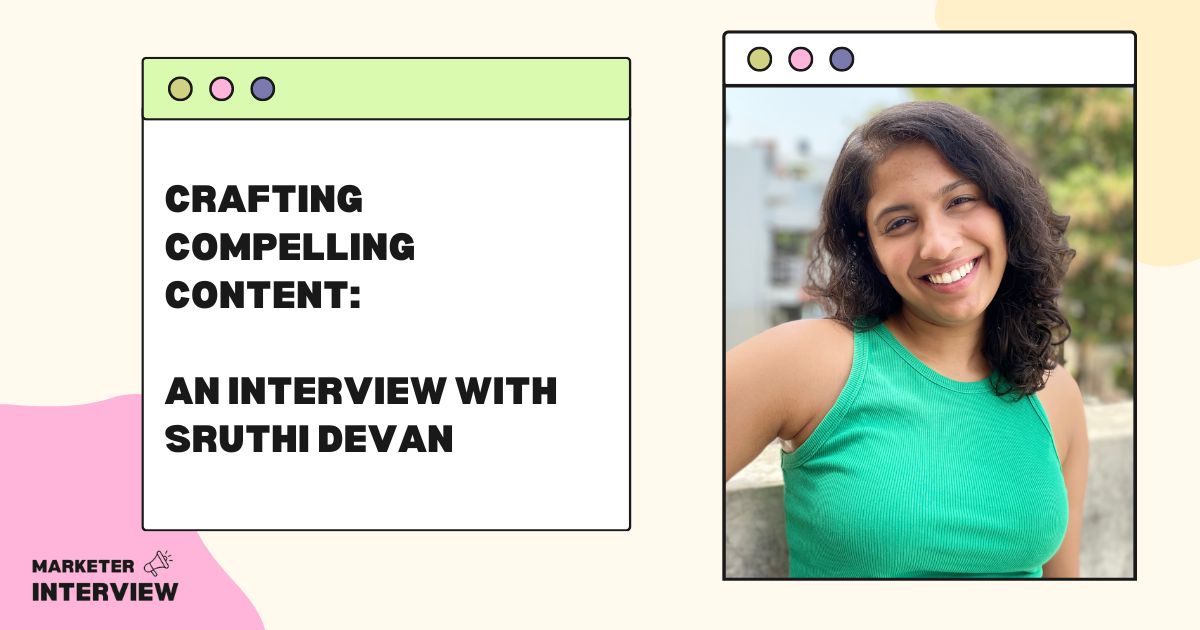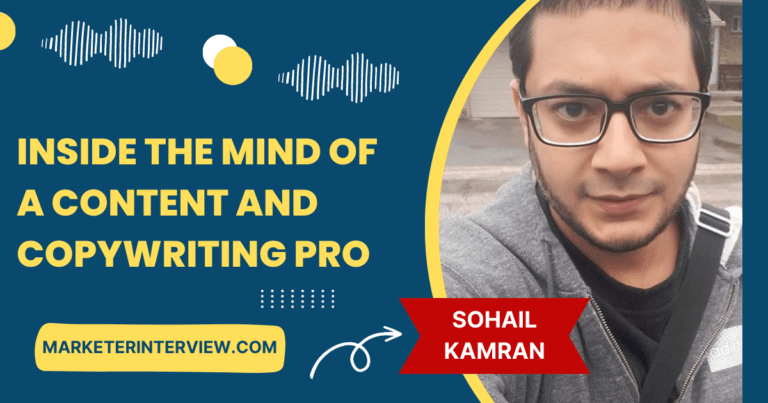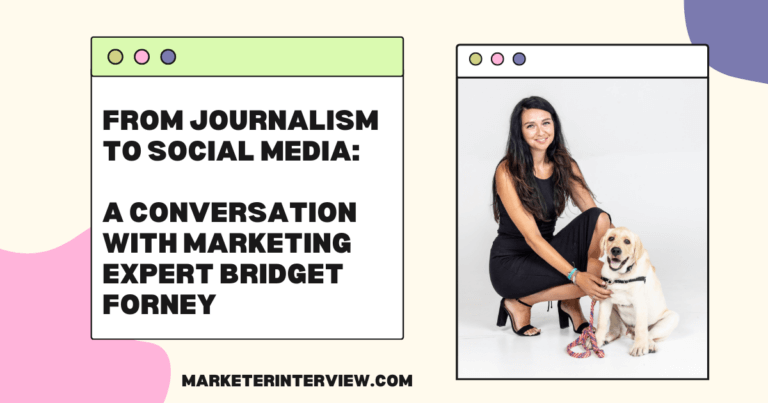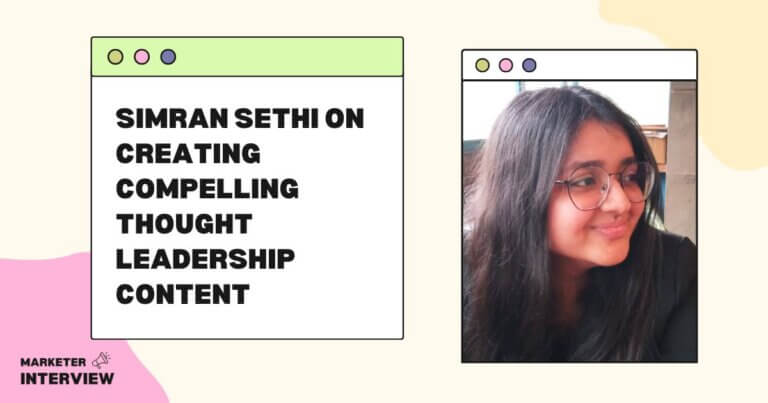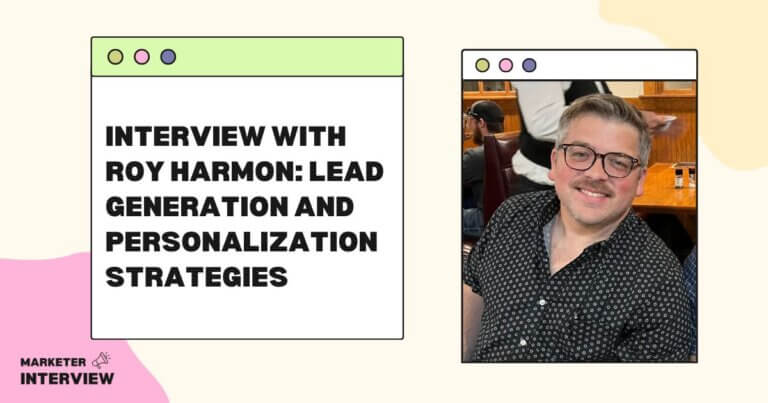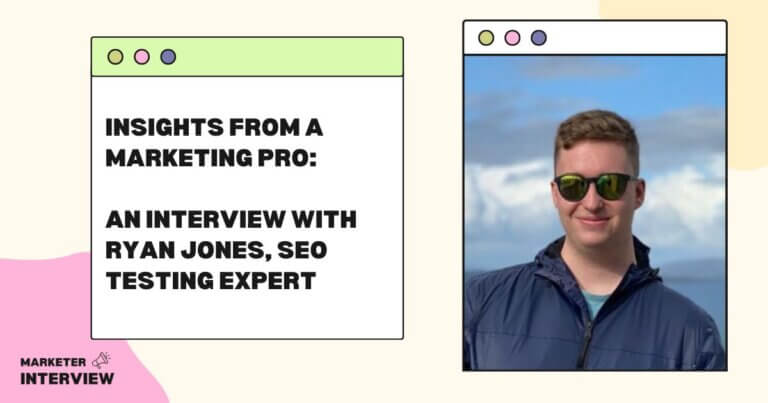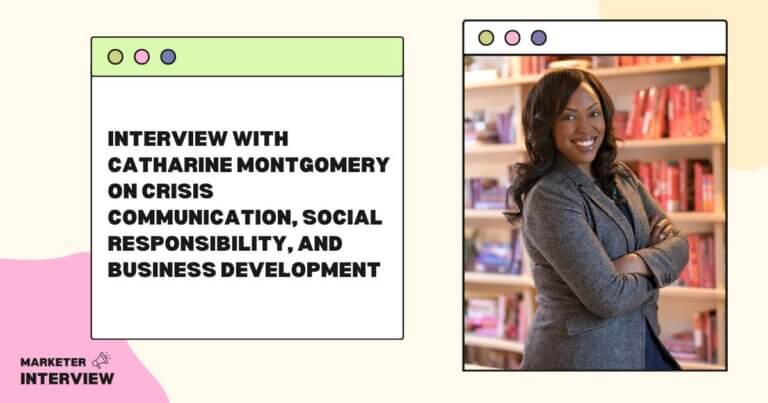Crafting Compelling Content: An Interview with Sruthi Devan
Welcome to Marketer Interview, where we delve into the minds of influential marketers to uncover their insights and experiences.
In today’s interview, we enjoyed speaking with Sruthi Devan, a talented Content Marketing Consultant passionate about storytelling and data-backed strategies.
With expertise in content marketing and employer branding, Sruthi brings a unique perspective to the marketing world. Her ability to fuse creativity with strategic thinking has made her a valuable asset for brands seeking compelling content and effective communication strategies.
Join us as we explore Sruthi’s journey into marketing and gain valuable insights into her career and field of expertise.
Contents
- 1 Can you share with us how you first got involved in marketing?
- 2 How do you ensure your storytelling aligns with the brand’s message and resonates with the target audience?
- 3 Could you provide examples of successful content marketing campaigns you have worked on?
- 4 How do you develop communication strategies that convey a consistent brand voice and engage internal and external stakeholders?
- 5 How do you research and gather insights to create compelling copy that drives results?
- 6 What key elements should companies focus on when developing their employer brand?
- 7 You mentioned your interest in advocating for gender rights and leadership. How do you incorporate this passion into your marketing work?
- 8 In today’s digital age, many marketing tools and software are available. Which tools do you find most beneficial for your work?
- 9 As a content marketing consultant, what metrics and key performance indicators (KPIs) do you prioritize to measure the success of your campaigns and strategies?
- 10 What advice would you give aspiring marketers looking to build a successful content marketing career?
I’ve always loved storytelling and data. But, growing up, it was an odd combination of skills that didn’t make any sense to me because I didn’t want to stick to pursuing only one.
But my first job (a content and sales gig at a startup) changed things for me.
I got to experiment with sales (as an introvert), content writing, branding, and content marketing.
That’s when I realized that marketing could be the perfect fusion of my love for storytelling and data. Now it’s been more than 8 years since I made that decision, and I get sure of it every day (even on the bad days).
How do you ensure your storytelling aligns with the brand’s message and resonates with the target audience?
I’ve always believed that thorough research about your audience, including their psychography, is critical to lay a solid foundation for your content marketing efforts.
Once you get to know your audience, understanding how they look at a brand becomes easy.
When I craft a brand’s messaging and tonality or even a simple social copy, I think about the brand from its audience’s perspective. By keeping them at the core of all messaging through research, I ensure a seamless alignment between the brand’s messaging and what its audience would relate to.
Could you provide examples of successful content marketing campaigns you have worked on?
I like to measure the success of my campaigns by measuring their social and business impact. A campaign that did both would be #OrderDirect.
When I was at DotPe, we created a campaign called Order Direct to help restaurant owners and small business owners get direct orders to save money on massive commissions charged by other ordering platforms.
So we invested in understanding what massive commissions in the post-pandemic world did to businesses and how it impacted every aspect of their daily lives.
We then created a video where we portrayed a restaurant owner sharing the impact of commissions on their businesses and requesting people to order directly.
We pushed the video message through our partnership with the National Restaurant Association of India (NRAI), plugged it into our product, promoted it on social channels, and did PR to educate as many people as possible.
This video got over 500k views, and the 360-degree campaigning helped us enable over 20,000 restaurants to get direct orders.
It also helped educate the audience about a new ordering method through a human-centric and empathetic lens.
The 2 key strategies that helped us find success were:
- Relying on a multi-channel content distribution strategy: 360-degree campaigning allowed us to tap into our existing audience and build a pipeline of potential users.
- Investing in cause-driven messaging: Since we were at the awareness level of the AIDA model, we decided to rely on benefit-driven marketing. We relied on communicating the social impact of the product. This helped us build trust and get high-quality leads.
I continue to use these strategies with many brands. As long as the marketer is patient with building a knowledge base of audience behavior and preferences, it helps build that trust during the initial days of the brand.
How do you develop communication strategies that convey a consistent brand voice and engage internal and external stakeholders?
Developing an effective communication strategy begins with understanding the brand’s audience, core values, and identity, as this forms the foundation for all communication. This understanding ensures that the brand’s message aligns with the brand’s ethos.
Next, I focus on crafting a unique voice that resonates with the brand’s identity and target audience. This voice must be consistent across all communication channels, from internal memos to social media posts. Maintaining this consistency helps in building trust and enhances brand recognition.
Audience segmentation is also essential. Different stakeholders interact with the brand differently, requiring varying communication strategies. For instance, the preferred communication method for employees might be emails or internal newsletters, while customers might engage more on social media.
Lastly, integrating storytelling into communication strategies is critical. Stories help humanize the brand, making the communication more relatable and engaging for the stakeholders. This strategy can significantly boost engagement, turning stakeholders into advocates for the brand.
So understanding the brand’s identity, crafting a unique voice, segmenting the audience, and employing storytelling form the pillars of my corporate communication strategy. This ensures that the brand voice is consistent across all stakeholders.
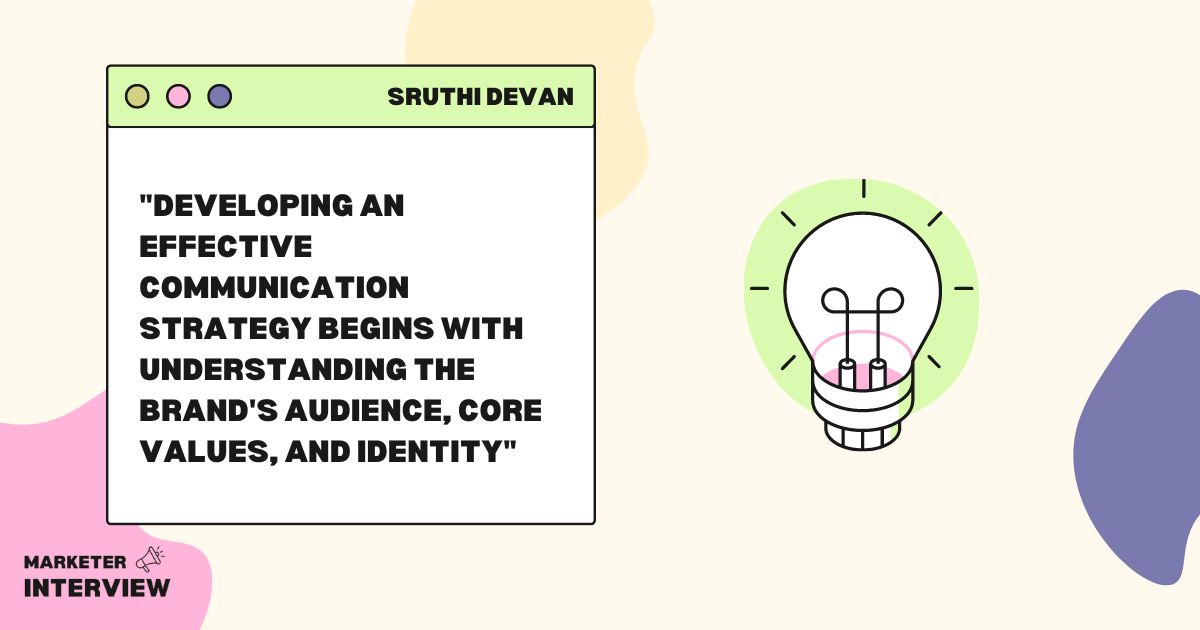
How do you research and gather insights to create compelling copy that drives results?
I like to keep my copywriting process simple but effective.
I use a three-step process:
First, I conduct primary research, conducting surveys and interviews to gather firsthand information about customer preferences, habits, and needs.
Second, I utilize secondary research, analyzing existing data and studies about the industry, competitors, and market trends.
Finally, I use these insights to craft a customer persona. This persona guides the copy’s tone, language, and content, ensuring it resonates with the audience and drives results.
What key elements should companies focus on when developing their employer brand?
When companies are forming their employer branding strategy, it’s vital to solve for the organizational culture as you solve for a product.
Begin with the objective setting of your campaigns. Most organizations fall under either of the two categories when it comes to employer branding objectives:
- Attract more applications
- Attract quality applications
The second option applies to large FCMGs and big enterprises mostly because they usually have many inbound applications and want to prioritize quality applications.
Once you know your objective, the next step is to understand your audience, i.e., your employees, and be patient about listening to them and working to address their concerns.
This can be done by first building psychological safety. That way, employees feel comfortable enough to share their honest preferences.
This is where most companies fail. For example, when many remote companies decided to go on-site, some experienced attrition because employee consensus on what works for their well-being might not have been thoroughly considered.
This practice of honesty and the promise of safeguarding each other’s well-being goes a long way in building brand advocates within the organization.
Once we have these fundamental pieces, we have organizational values to form employer brand propositions. Then it’s a matter of blending it with content marketing and personal branding tactics like cause-driven messaging or 360-degree campaigns to build that top-of-the-mind awareness and attract the right talent.
You mentioned your interest in advocating for gender rights and leadership. How do you incorporate this passion into your marketing work?
My first full-time job was with a non-profit.
If I can persuade people to donate through my empathetic messaging, I can apply the same empathy-driven approach to sell brands successfully.
As I ventured into development communications more, I learned much about gender rights and issues, and that value system remains with me.
Through cause-driven messaging, I build campaigns celebrating a win for society and the business.
Its impact on building credibility can be significant. Especially because now that even pre-seed companies have understood the importance of organic marketing, most companies need help to stand out in the existing noise of brands on social media.
My marketing experiments helped me understand that cause-related marketing and CSR help brands stand out by helping their consumers understand the brand personality beyond just a product. This can help many businesses in the long run because they can always use the existing credit to diversify into other categories.
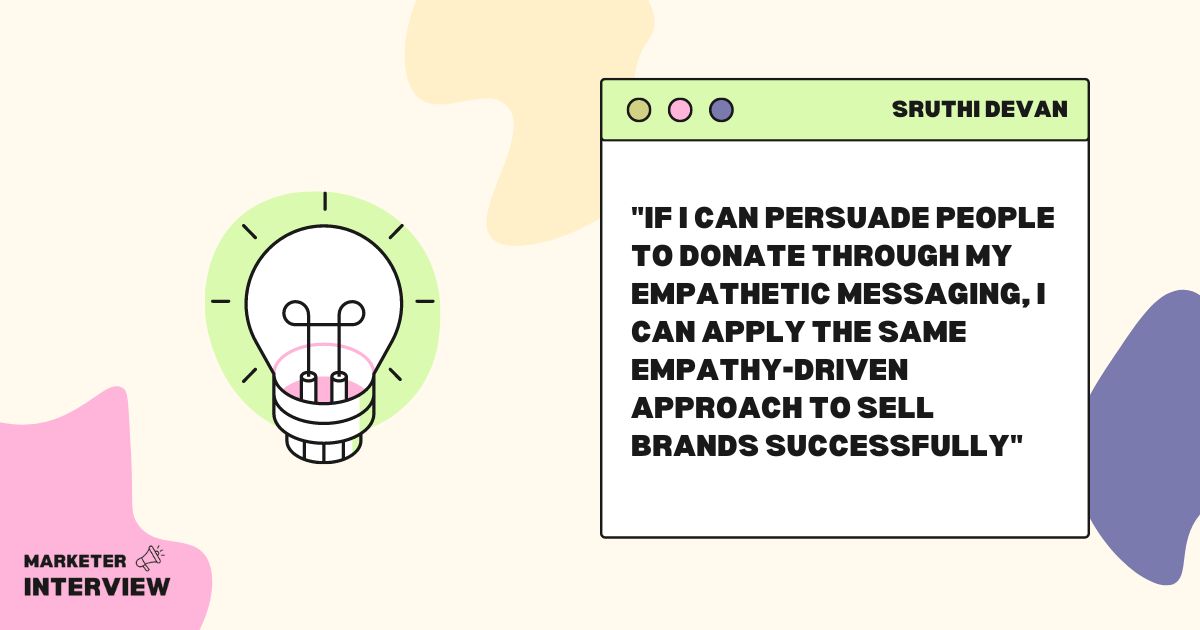
In today’s digital age, many marketing tools and software are available. Which tools do you find most beneficial for your work?
I use multiple tools to ensure I have a smooth content marketing engine.
I find Google Analytics vital for tracking website performance and understanding user behavior. In addition, SEMrush is helpful for SEO and competitive analysis, offering insights into keyword strategy and competition.
For content creation and management, I rely on tools like CoSchedule for scheduling and planning and Grammarly for proofreading. Canva is great for creating visually compelling content.
A unique tool I utilize is Frase, an AI tool that helps in content optimization and answering audience questions effectively.
Lastly, I use Notion + Trello for task management, enhancing my productivity by streamlining tasks and team collaboration.
As a content marketing consultant, what metrics and key performance indicators (KPIs) do you prioritize to measure the success of your campaigns and strategies?
Creating content without measuring impact can be a disaster. That’s why I prioritize a spectrum of success indicators:
- Traffic Metrics include unique visitors, page views, and bounce rate to understand audience engagement.
- Engagement Metrics: These include average time on the page, shares, comments, and likes.
- Conversion Metrics: These include conversion rate, click-through rate (CTR), and cost per conversion to measure the effectiveness of the content in driving desired actions.
- ROI Metrics: Return on investment is crucial to understand the financial effectiveness of campaigns.
Based on what stage of the AIDA model a brand is at, I then prioritize the metrics.
For example, some organizations that have their branding in place might want to look at becoming thought leaders in their space. So they try to build a community to maximize engagement.
What advice would you give aspiring marketers looking to build a successful content marketing career?
Understanding these 3 things early on in my career helped me grow a lot faster:
- If you are getting into marketing, start with sales or work with them closely. It’s essential to get an understanding of your audience and market. It also generally helps to learn how to sell early in your career because it helps with stakeholder management.
- If you have been doing content marketing for some time, remember to be open to consistently consuming all kinds of content to integrate diversity into your content. Also, you’ll be surprised how you can find inspiration at some of the most random places.
- Lastly, the only way to get over your writer’s block is to write. Allow yourself to write shitty content some days. If everyone only created award-winning content everyday, they would not be able to survive as a creative person in the long run. You have to go through the ups and downs of writing and show up for the love of the creative process.
It took me roughly 4 years to arrive at these learnings and I wish someone had told me sooner about it. Either way, I’m grateful that the learnings happened when they did.
